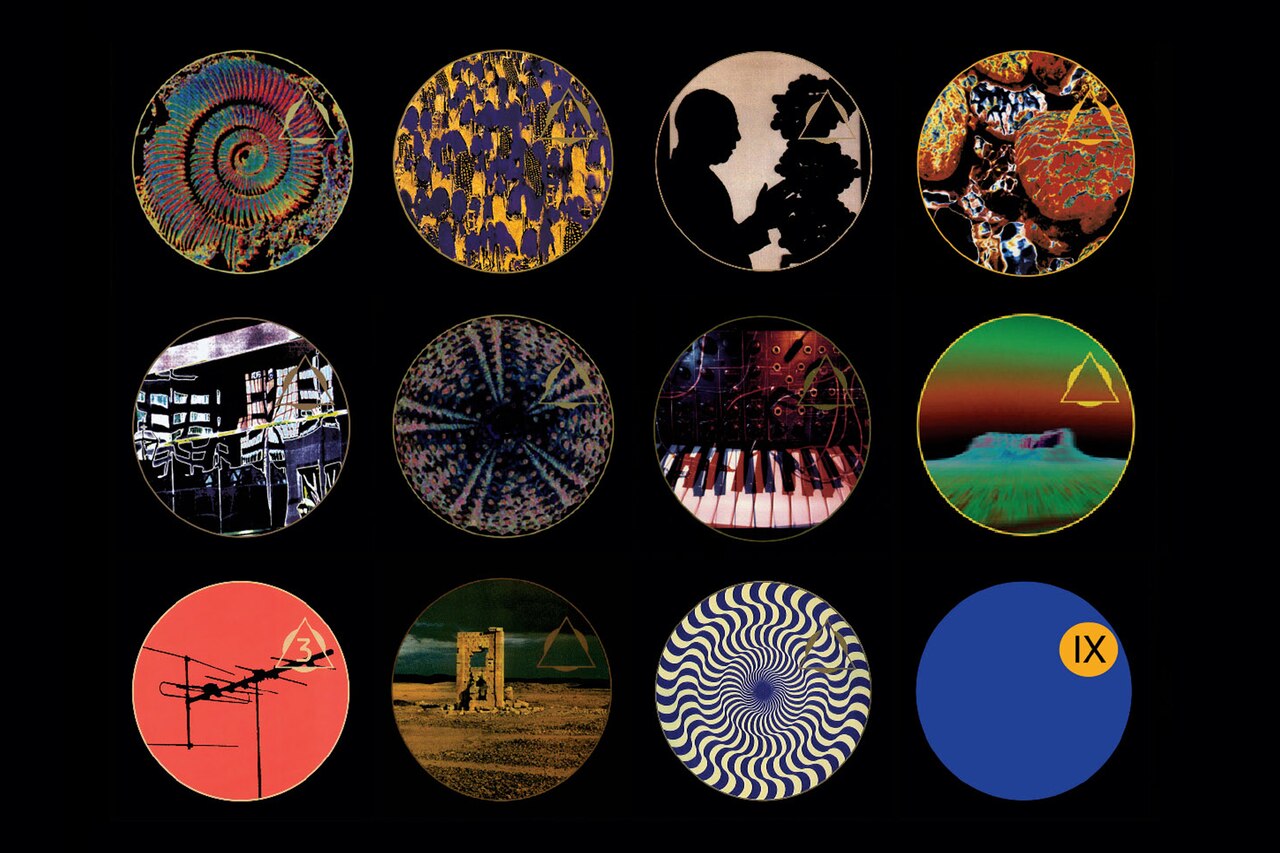
FAX: Space, Synths and Superhuman Stubbornness
Pete Namlook was one of the most prolific, single-minded electronic musicians of the last 25 years. Why doesn’t his name come up more often?
Frankfurt, 1990, and a 30-year-old Peter Kuhlmann is walking home from his job at a city center bank. As ever, he has his guitar with him – an instrument he’s constantly ferrying to and from gigs and rehearsals with local jazz-fusion bands. His virtuosic skills have made him a prized member of various contemporary Frankfurt acts, but his passion for being part of a live band is fading. Revisiting the same musical templates has begun to feel stifling. Kuhlmann longs to make music without limitations. He’s just not sure how.
Pausing for a moment on the bank of the Main River, he removes his guitar from its case and begins to idly pluck. His breezy playing seems to dovetail with the sounds of the passing river. Intrigued, he focuses on this surreal collaboration, and finds himself inspired to play in a freer, truer way. The restless ambient icon Pete Namlook was born here.
By the late ’90s Namlook was releasing albums via FAX +49-69/450464, most commonly known simply as FAX, on a near-weekly basis. Harnessing an extraordinary work ethic, his own solo or collaborative work formed much of its output. Fortunately, he’d had the foresight to make FAX the kind of label that would appeal to hardcore completists alongside casual fans of the chillout, ambient techno, space trance, kosmiche, dub and ethno New Age sounds that poured forth.
Sci-fi tropes, shadowy pseudonyms, strictly limited pressings, colour coding for different genres, inlay collectibles and variation-on-a-theme sleeves that looked ineffably cool when viewed en masse – all this and more drove intrigue and sustained sales. Units continued to shift even when the label’s intense release schedule outpaced the critical need for new Namlook or Namlook-adjacent music. His followers became somewhat notorious for their obssessive devotion, an intense presence within the chillout community to which they ostensibly belonged.
He had very strong ideas about efficiency and he didn’t like dealing with people who were the cliché of an artist: fuzzy, scatter-brained, diva-ish.
Years into FAX’s reign, Namlook would recount the riverside eureka moment to bassist, avant-garde hero and frequent collaborator Bill Laswell. “Up to that point Pete was playing very conventional music,” says Laswell, speaking from his home in New York. “It was that Chick Corea-style fusion sound, nothing remotely experimental or weird. But realising he could play along with these ambient sounds, that was a big moment for him. He came to see music and nature as directly related to each other.”
It would take Pete a while to find his true calling, however. A world away from the widescreen synthscapes he’d later create, his first electronic releases were high-impact and dancefloor-focused – tracks such as 4Voice’s “Eternal Spirit” helped define the Frankfurt trance sound. But while these early productions sold well, Pete was growing increasingly aggrieved by the machinations of the music industry.
“Pete had a very low tolerance for misbehaviour, betrayal or people doing weird stuff behind his back,” says collaborator Uwe Schmidt, AKA Atom TM, speaking from his home in Chile. “He was very solitary and trusted very few people. He’d immediately cut ties with people at the first hint of anything underhand, and given how some people in the scene can be, that happened quite a lot.”
“He put a lot of thought into how FAX would be run,” says Schmidt. “Working at a bank led him to do a deep economic analysis of the whole scene: who was doing what with which label, and how much they were making. He crunched the numbers: ‘How hard can it be? There’s no real mystery to it. Most labels are really inefficient. They’re doing a shitty job, taking a huge portion of the artists’ money. Uwe, if you release music on my label, we’ll split the money 50/50.’ So I did.”
Schmidt would later run Rather Interesting as a sub-label of FAX, Pete having judged him to be the only musician organised enough to take on such a responsibility: “He saw that I was both creative and really efficient, so he said, ‘Why don't you make a label? You can fill it with whatever music and artwork you want to, but here’s the deal…’ Then he went into all these very specific technical details on how he wants masters delivered, artwork delivered, how to format barcodes and so on. He wasn’t keen on me making even little mistakes. If I delivered an audio file in the wrong format he would totally freak out. But, generally, we worked together well.”
The first FAX releases stuck to a trance sound, but Namlook soon tired of the genre and the people associated with it. With the riverbank revelation still lingering in his mind, he ditched pummelling, 145 BPM kicks to focus on ambient music.
At the time, many viewed the early ’90s ambient boom as a straightforward continuation of the concepts Brian Eno had laid out with his four-album Ambient series. In the liner notes for the first of these, Ambient 1: Music For Airports, Eno defines the genre as being “as ignorable as it is interesting.” Pete Namlook, however, saw it very differently.
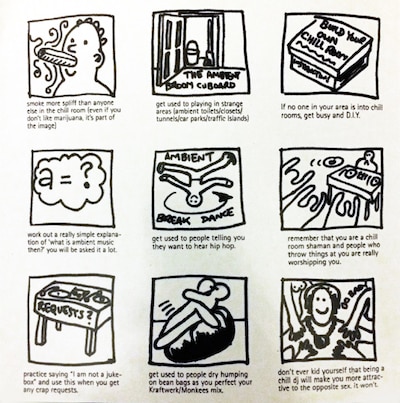
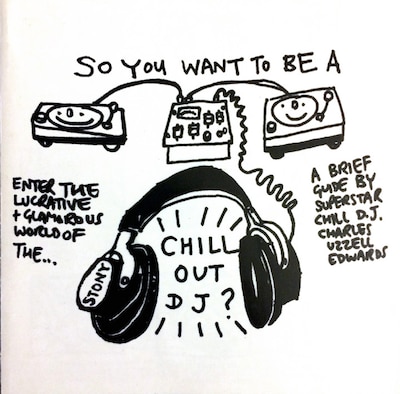
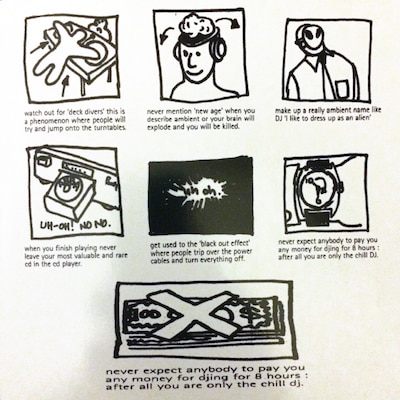
“Ambient as Eno defines it is more-or-less musical wallpaper,” Namlook told German electronic-music magazine Slices. “It stays in the background and serves the environment, rather than saying something about itself. My definition of ambient has nothing in common with Eno’s. It’s about a journey, about intense emotions.”
In March 1993, he released his first album as Air (no relation to the multimillion-selling French group). Limited to 500 copies, the eponymous LP became an ambient touchstone, with its dramatic synth lines and uncanny atmosphere challenging preconceived ideas about what chillout music could, or should, be. Licensed to Rising High soon after its initial run on FAX in order to meet demand, it established Namlook as a major figure on the global electronica scene and allowed him to start working through an ambitious wishlist of collaborators.
These collaborations would become fuel for Namlook’s creativity and a key part of FAX’s cult appeal. Each newly formed super-duo, and occasional super-trio, generated a different musical Venn diagram, as Namlook’s sonorous synths intersected with everything from techno (Richie Hawtin) to jazz (Karl Berger), classical (Alban Gerhardt) to ambient house (Mixmaster Morris).
Once Namlook had a potential collaborator in his sights, he’d do whatever it took to get them into the studio with him. “My first encounter with Pete was when he rang me to say that he’d spotted a sample of one his tracks on a record I’d just released,” says Laswell, who released numerous albums with Namlook, such as 1994’s Outland and Psychonavigation. “It was a very distinctive noise I’d sampled, but I guess I’d thought I’d get away with it because it was going to be a pretty obscure record with next to no promotion. And Pete says, ‘So, should I sue you, or shall we collaborate?'
"I actually told him that he may as well sue me like everybody else does,” says Laswell, “because the time and effort involved in collaborating wasn’t worth it! He had a good laugh about that. But we got chatting and did end up working together – sometimes he’d come to New York, sometimes I’d go to Germany. He was very keen to get me on as many recordings as possible. We weren’t always working in the best conditions: One time we met up after I’d played a festival in Frankfurt, and we didn’t have a proper way to record my bass guitar, so we ended up recording straight into Pete’s laptop, which was terrible. Some of those recordings could definitely have been done better.”
They shared a preference for working quickly and not getting too caught up in the minutiae of a track. “There was never any second-guessing or time-wasting,” says Laswell. “He might start off a recording session by playing textures or sounds or rhythms, and I’d just try to adapt to it. He’d often ply me with enormous amounts of wine – he had an amazing wine collection – because he knew it’d meant I’d play for longer, and perhaps even play better! We were always concerned with getting the best possible results, but also in getting them quickly. That’s how he managed to release so many records: he could just work really, really quickly.”
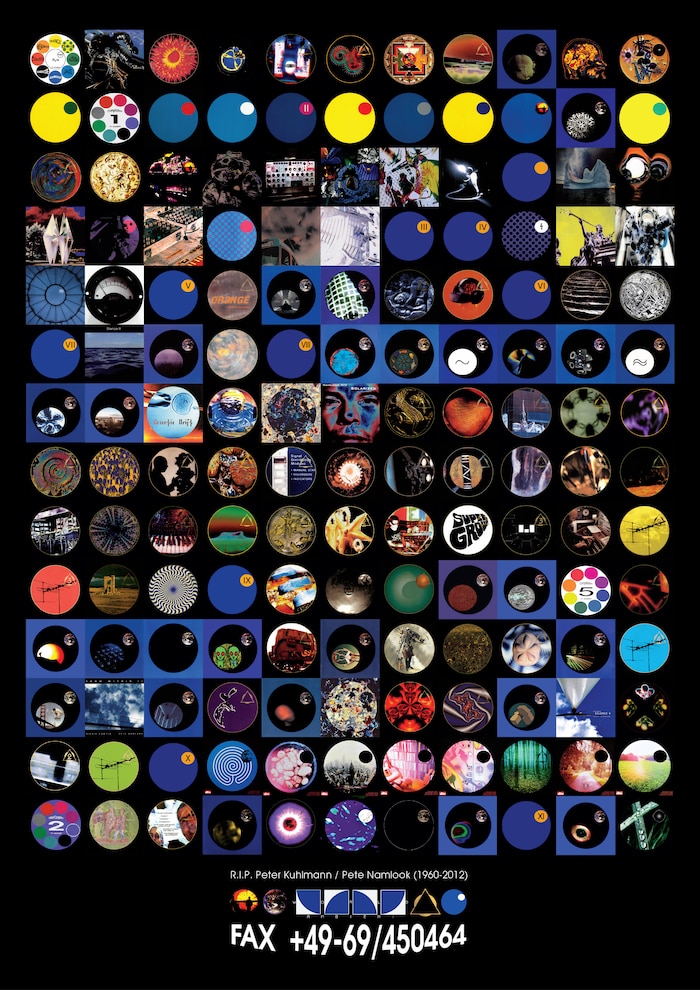
Some of Pete’s collaborators struggled with his fast-and-unfussy production style, but found that compromise wasn’t a word in his vocabulary. “Pete is probably the only person I’ve ever met who had an even more rigid mindset than me,” says Schmidt.
“He’d say, ‘OK, so this is how I want to work, and if you can get along with that, great, and if not then I won’t work with you.’ There were a couple of people he made music with who couldn’t comply with his wishes, and he wouldn’t ever work with them again. He had very strong ideas about efficiency and he didn’t like dealing with people who were the cliché of an artist: fuzzy, scatter-brained, diva-ish.”
Schmidt sometimes struggled with Pete’s stubborn unwillingness to tweak tracks that he considered to be finished. “He really liked the idea of having a creative moment that you document and then leave alone, which could be frustrating for me because that’s not how I work. Very often I’d say that I wanted to go back and do a section again, to make it better, and he’d be like, ‘No, that’s the way it is and it’s staying like that,’ and in the majority of cases that’s exactly what happened. Looking back I think he was maybe right, but at the time these confrontations would be frustrating.”
Not that collaborating with Namlook was a joyless slog. He had, by all accounts, a zinging sense of humour, and would often find fun, innovative ways to spark creativity. ”He once showed me this new synthesiser he’d just bought,” remembers Schmidt, ”then said, ‘Why don’t you have a play around on it while I go to the kitchen to make us some dinner?’ And he was secretly listening in on me, making mental notes. It’s a very creative moment when you’re just messing around with a new piece of equipment, not really knowing what you’re doing. When he came back from the kitchen I said, ‘This is a great synth. I wish I’d recorded some of that just then, but now it’s gone forever.’ And Pete reveals that he was in fact secretly recording the whole thing, and so we picked out sections and built a track around them.”
The FAX catalog is just so overwhelming, and so diverse, and you just need to take your time and find your way through it. There’s a lot of digging to do.
In 1993 Geir Jennsen, best known as Biosphere, collaborated with Namlook on the sumptuously trippy The Fires of Ork album, released through R&S sub-label Apollo. “It was a project full of difficulties,” says Jennsen. But as borderline traumatic as collaborating with Namlook proved to be for the placid Jennsen, he found a way to rise above the challenges and make their creative partnership work. This much is clear from Jennsen’s diary entries of the time, which offer a unique insight into the surprisingly fractious electronic music industry of the mid-’90s:
Tuesday 22 June 1993
Found a letter from Pete Namlook in the mailbox! He’d like to record a CD with me. Fun. In my opinion, he has made the best music of recent times. Had a long chat with Namlook on the phone. His real name is Peter Kuhlmann. He did not like the fact that I have a publishing agreement with R&S Records, as he did not want any interference from [R&S founder] Renaat in our project.
Monday 28 June 1993
Katrien from R&S called me. I told her that Pete Namlook would like to work with me. Right after that Renaat called: “Namlook? No. No way!”
Tuesday 17 August 1993
While I was packing for Frankfurt, Peter called me and to say that he and Renaat had finally come to an agreement. We can make an album together, and maybe license it to R&S. A good start to the day. Had a good trip to Frankfurt too. Peter showed me around his apartment/studio. I got my own guest room. We had dinner at a restaurant.
Thursday 19 August 1993
We started early this day. His girlfriend read some sentences which we sampled and used on “Talk to the Stars.” After dinner, we started working on my sketch of “Energy to Earth.” Peter did some excellent work, especially with his EMS Synthi. It was a great experience to watch and listen to his work. But I didn’t like the fact that he constantly had to leave the studio to take care of family matters. I could feel that something was wrong and it became quite unpleasant as he became more moody.
Monday 23 August 1993
Had to wait all day. First, Peter had to attend his daughter’s birthday party, then he had more urgent office work to catch up on. I spent the time recording music from his record collection, but by 7 PM I was so impatient that I could have exploded. This was the fourth day without recording anything. I was tempted to take the train to Belgium, but I did not have enough money. Finally we started working at 8 PM, on ‘the mountain idea.’ We tried to imagine a person lost in the fog on the mountain. Peter added his classic Silence-strings and read something from Nietzsche through one of his many effect modules. New title: “Gebirge.” Very happy with the result.
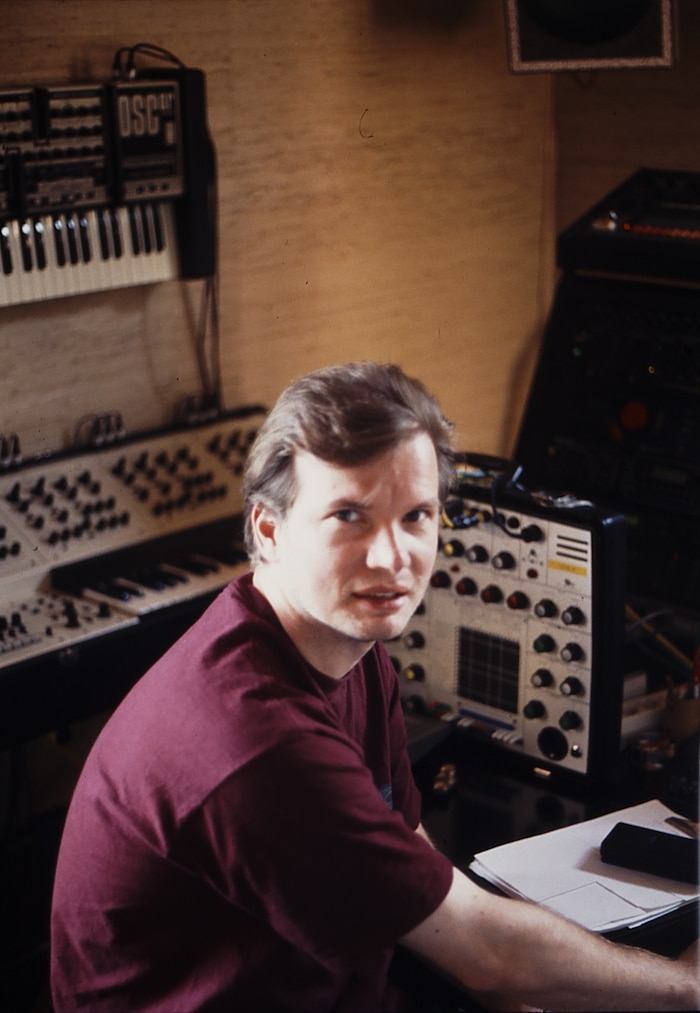
Namlook’s headstrong approach to life resulted in him putting out around 400 records in FAX’s first decade in operation alone. The sheer scale of this, and the slavish nature of devotees who frequent social media fansites and Discogs pages to uphold its legacy, makes for a daunting proposition to anyone looking to immerse themselves in Namlook’s sprawling body of work. As such, he represents something of a blind spot, even for those swept up in the contemporary resurgence of ambient.
“I don’t know if it’s damaging his legacy as such,” says Laswell, “but it is making it difficult for new people to discover him. The FAX catalog is just so overwhelming, and so diverse, and you just need to take your time and find your way through it. Considering that electronic music is the foundation, it gets into a whole load of different areas. Some of it is dance music, then there’s a series using sounds from nature; there are Mongolian-influenced releases and African-influenced releases. His albums with Tetsu Inoue are, too, very different from anything else he releases. There’s a lot of digging to do.”
In its time, FAX attracted numerous detractors alongside the cheerleaders. But playing the game in a traditional sense – spacing out releases to one per month, say, or letting album runtimes rest below 150 minutes – was anathema to him. The drag-down effect caused by his impetuous nature is likely to have been compounded by overexposure. Not everything was a winner. With an armful of Dark Side of the Moogs (Namlook’s monolithic drone passages with far-out forefather Klaus Schulze) and 27 editions of his Namlook series (only a fraction of his solo excursions), quality control was not a primary concern. Bill Laswell isn’t even sure how many albums he and Namlook made together.
On November 8th, 2012, Peter Kuhlmann suffered a heart attack at his rural home and died within seconds. He was 51 years old. His unexpected and untimely passing meant the end of his Pete Namlook moniker, FAX +49-69/450464, its various sub-labels and an array of recurring musical relationships. After his passing, his family decided to not continue label operations, out of respect for his singular vision. With no one to oversee it, the FAX discography has slowly fallen into physical and cultural disrepair, with much of the back catalog surviving through copyright-flouting YouTube uploads alone.
However, Namlook’s tapestry of releases – some of which currently sit at sky-high prices on Discogs – may be about to enter a period of reappraisal. As the cottage industry of obscure electronic reissues continues to grow, some of FAX’s best-loved and rarest works are being re-presented to contemporary audiences. Namlook’s 1993 ambient opus Dreamfish – produced with Mixmaster Morris – and all 11 volumes of Dark Side of the Moog have been re-released. In June 2018, Jenssen reissued The Fires of Ork on his own Biophon imprint, while Namlook and Richie Hawtin’s mind-bending collaborations as From Within are rumoured to be next.
Music aside, Kuhlmann remains in the thoughts of the select few he allowed inside his strange, unique world. “He was one of the few people in the business I’ve ever been able to really rely on,” says Schmidt. “Totally helpful and trustworthy – I never had any doubts about him. And aside from the business and creative stuff, he was a great, sensitive guy. You’d go in the office with some technical question, and he’d spot something was up with you, and ask what the problem was. And he’d really listen, and take it very seriously, and really think about it, and very often his advice would be totally spot-on.
“I have a friend who says that people come into your life to show you parts of the universe that you’re unable to see otherwise. And I really miss Pete’s part of the universe.”
Header image © Kevin Foakes
